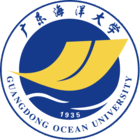详细信息
基于锚系观测的春季琼州海峡水体输运特征研究 被引量:1
Water Volume Transport Across the Qiongzhou Strait in Spring Based on Mooring Observation
文献类型:期刊文献
中文题名:基于锚系观测的春季琼州海峡水体输运特征研究
英文题名:Water Volume Transport Across the Qiongzhou Strait in Spring Based on Mooring Observation
作者:陈锦康[1];谢玲玲[1,2,3];李君益[1,2,3];李明明[1,2,3]
机构:[1]广东海洋大学海洋与气象学院近海海洋变化与灾害预警实验室,广东湛江524088;[2]广东省高等学校陆架及深远海气候资源与环境重点实验室,广东湛江524088;[3]粤西热带海洋生态环境广东省野外科学观测研究站,广东湛江524088
年份:2025
卷号:43
期号:2
起止页码:322
中文期刊名:海洋科学进展
外文期刊名:Advances in Marine Science
收录:北大核心2023、、北大核心
基金:国家重点研发计划项目(2022YFC3104805);国家自然科学基金项目(42276019);广东普通高校创新团队项目(2019KCXTF021和2023KCXTD015);国家自然科学基金委员会共享航次计划2022年度北部湾科学考察实验研究项目(42249911)。
语种:中文
中文关键词:琼州海峡;潮流;余流;水体输运
外文关键词:Qiongzhou Strait;tidal current;residual flow;water transport
中文摘要:基于2023年春季琼州海峡锚系观测和断面实测数据,对琼州海峡潮流动力特征以及水体输运规律进行研究。通过功率谱与调和分析发现,海峡内主要存在全日潮(O_(1)分潮)、半日潮(M_(2)分潮)和三分之一日潮(M_(3)分潮)三种周期类型的潮流,其中以全日潮为主,振幅比为1.00∶0.40∶0.19。潮流椭圆长轴方向大致与岸线平行,O_(1)分潮最大振幅位于表层,上层水体呈顺时针旋转,近底层呈逆时针旋转;M_(2)分潮和M_(3)分潮分别为全水深逆时针和顺时针旋转。余流结果显示,春季琼州海峡水体输运方向以西向为主,输运量为0.05 Sv~0.10 Sv(1 Sv=10^(6)m^(3)/s),平均值约为(0.04±0.04)Sv。受海峡两端海面高度差、流场变化等因素影响,琼州海峡余流会出现东向流。研究结果为北部湾与南海之间的水交换提供了科学依据。
外文摘要:Using mooring and sectional observations in spring of 2023,this study investigates the tidal current characteristics and water volume transport in the Qiongzhou Strait.Results show that there are three dominant tides in the strait,i.e.,diurnal(O_(1)),semidiurnal(M_(2)),and third-diurnal(M_(3))tides,of which the diurnal tide is strongest,and their amplitude ratios is 1.0:0.40:0.19.The major axes of tidal current ellipses generally aligns with coastline,with maximum amplitudes occurring at sea surface.The ellipses rotate clockwise(counterclockwise)in upper(lower)layer for O_(1),but clockwise for M_(2) and counterclockwise for M_(3) in entire water volume.The water volume transport associated with residual current across the strait is primarily westward,varying between?0.10 Sv and 0.05 Sv,with an average of(?0.04±0.04)Sv.With variation of sea surface height difference and background currents at the two ends of the strait,eastward residual flow was observed during late period of the observation.Our results will be helpful to understand the seasonal variability of water exchange between the Beibu Gulf and the South China Sea.
参考文献:
![]() 正在载入数据...
正在载入数据...


